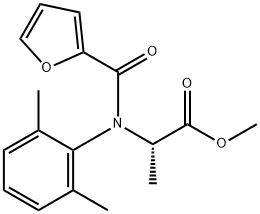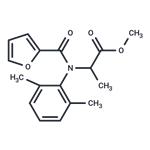Uses
Furalaxyl is used for the control of soil-borne diseases caused by
Phytophthora and Pythium species and other Oomycetes on ornamentals.
Definition
ChEBI: Methyl N-(2,6-dimethylphenyl)-N-2-furoylalaninate is an alanine derivative that is the N-furoyl derivative of methyl N-(2,6-dimethylphenyl)alaninate It is an alanine derivative, an aromatic amide, a carboxamide, a member of furans and a methyl ester.
Origin
Furalaxyl is a condensation product of furan-2-carboxylic acid and 2,6-dimethylaniline which is subsequently coupled with methyl 2-chloropropionate. The compound was introduced in 1984.
Metabolic pathway
Incorporation of furalaxyl into the refreshed nutrient
solution is made several times at different plant growth
stages, and fulalaxyl is decomposed in the nutrient
solution into N-(2,6-dimethylphenyl-N-(2-
furanylcarbonyl)-DL-alanine and N-(2,6-
dimethylphenyl)-DL-alanine by an enzymatic process.
Degradation
Furalaxyl is a stable compound which is hydrolysed only at extreme pH
values. Its calculated DT
50 values (20 °C) are, at pH 1, >200 days and at
pH 10,22 days (PM).
Furalaxyl was degraded when irradiated in aqueous solution with UV
light (254 nm) with a half-life of 86 minutes. This study used non-labelled
furalaxyl but the products of amide bond fission (2) and subsequent
N-dealkylation, 2,6-dimethylaniline (3) were identified (see Scheme
1). The product mixture was therefore simpler than that obtained for
metalaxyl under similar conditions. Under simulated sunlight conditions
degradation was slower with a half-life of 391 days (Pirisi et al., 1996).


